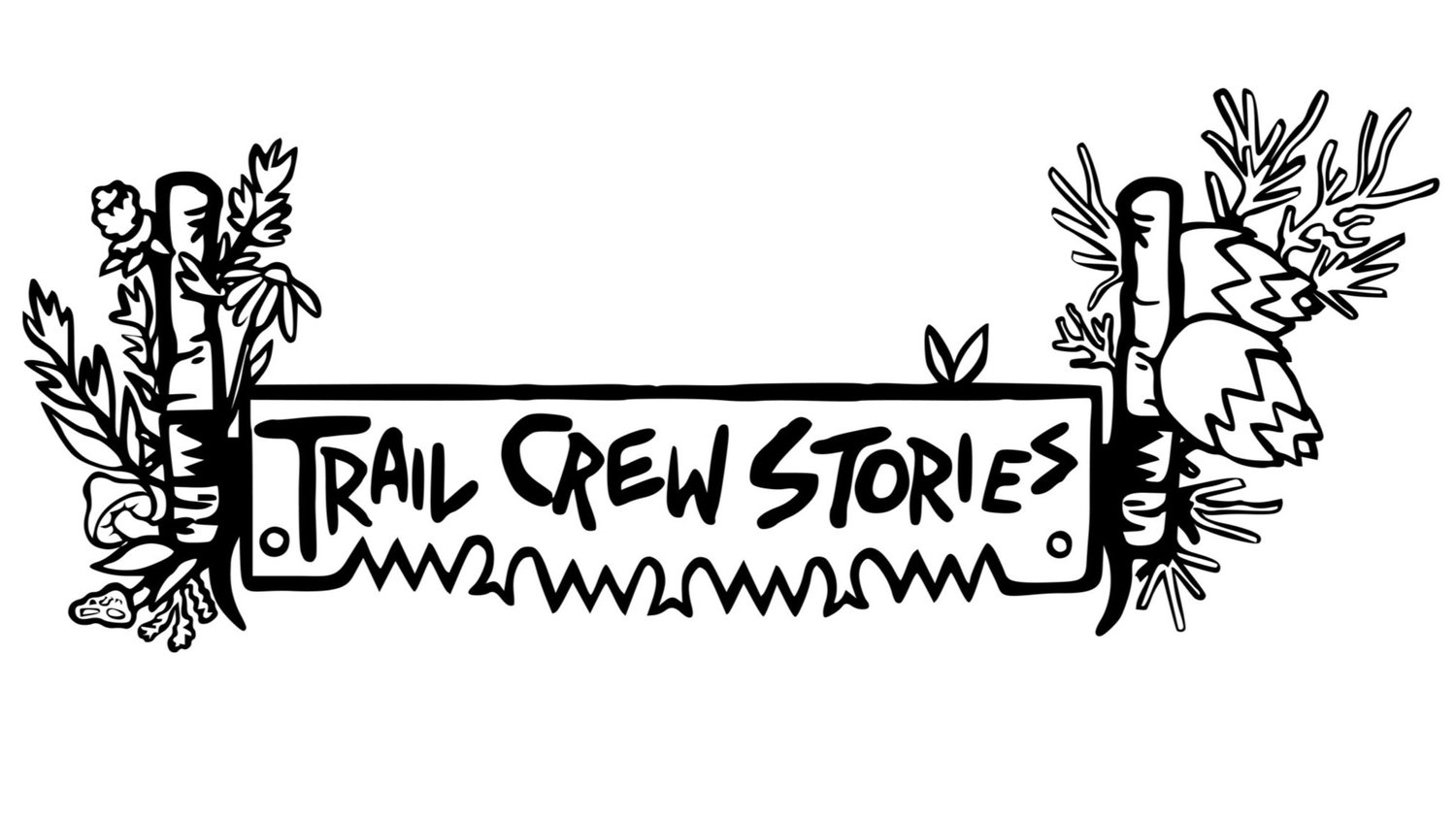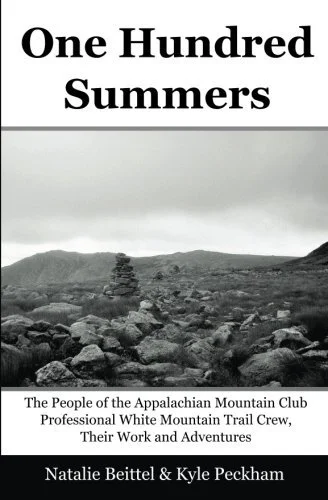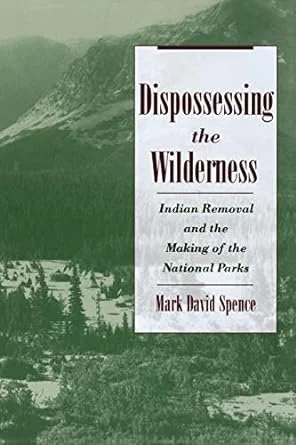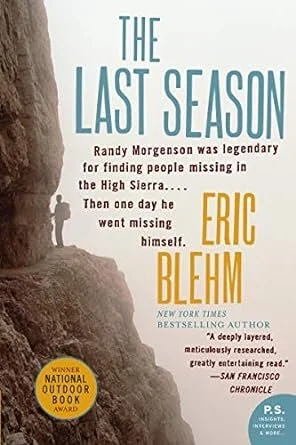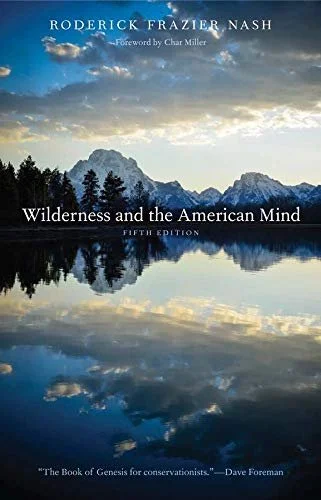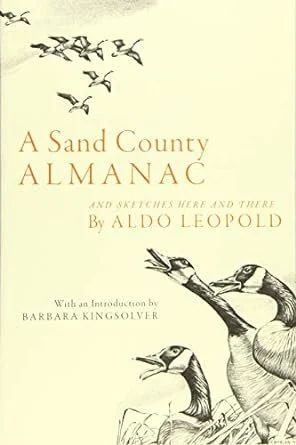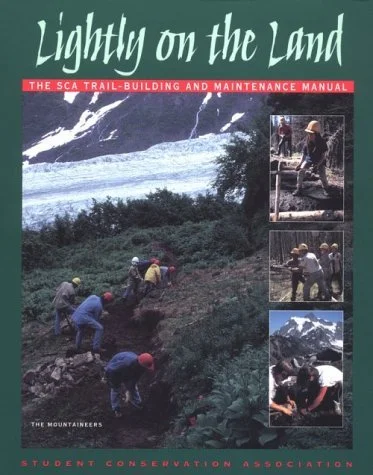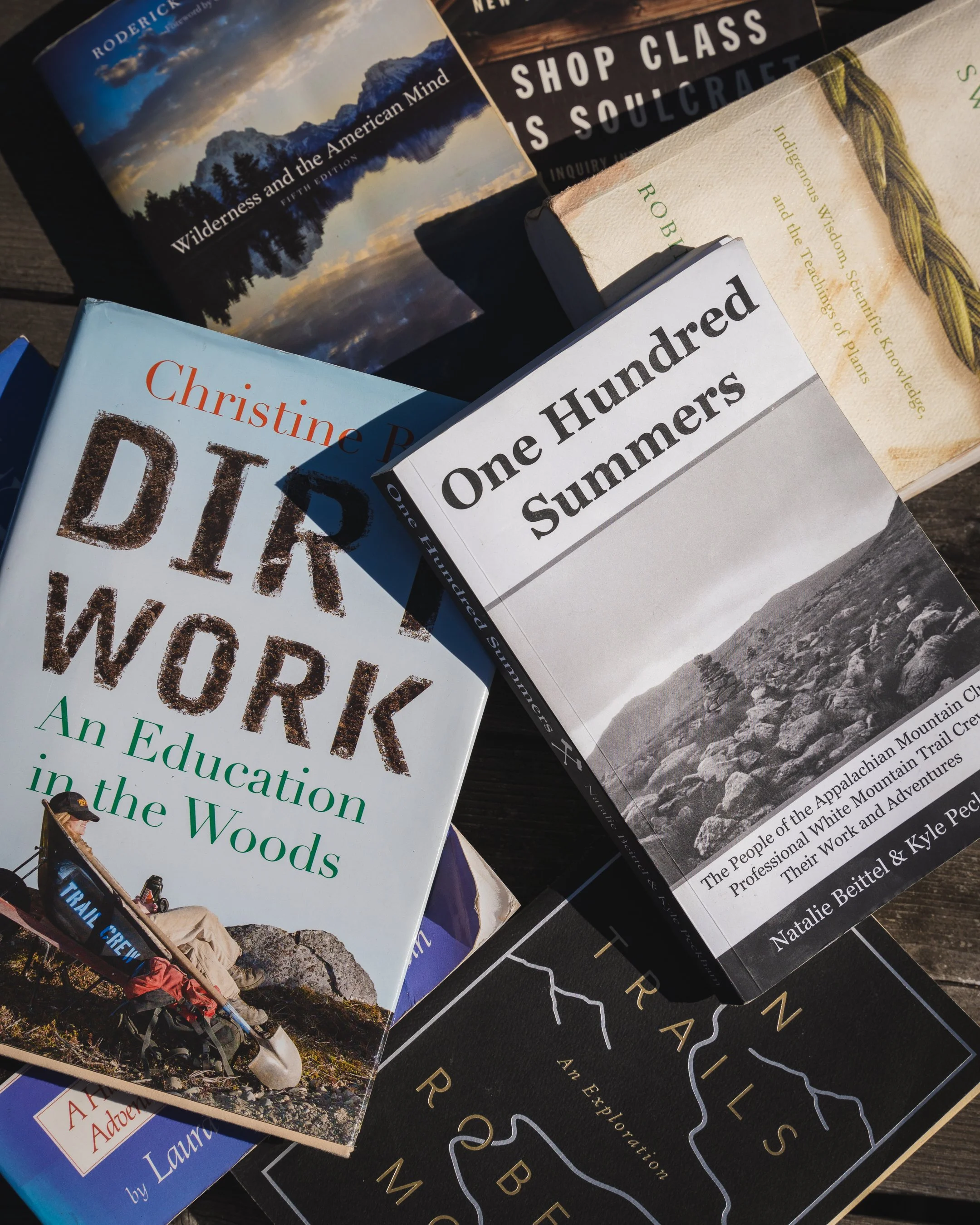The Trail Worker’s Essential Reading List
Tent time in the backcountry means lots of time for reading, and backcountry trail workers are voracious readers. What books are on their reading lists?
This list of titles is intended to add depth and context to trailwork, to allow trailworkers to better understand the lands where they work, why the work matters, and the lineages of which they are part.
Below is a list of books for trailworkers and outdoor recreationists alike, compiled from recommendations by the Trail Crew Stories community.
Support small booksellers! If you’re looking to purchase any of these titles, please consider shopping from a local bookstore, or an online vendor such as bookshop.org, which fulfills orders via local bookstores.
I’m also working on a Trail Worker’s Crowdsourced Reading List! Is there a book you’ve read in the backcountry that you want to share with the trails community? Please send us your recommendation with a few sentences about why you suggest that book and we will add it to the list!
Dirt Work by Christine Byl
Christine Byl’s Dirt Work is perhaps the only memoir of a career trail worker in print. Byl shares her journey from naive newcomer to seasoned traildog in a decades-long career that included working trails in Glacier National Park, Chugach National Forest, and Denali National Park. Byl superbly captures the nuance of trailwork: the pain and the pleasure; the joy and exhaustion; the romance of the job and its toxic elements. Honest and fullhearted, Dirt Work illuminates the culture and lifestyle of professional trail workers in a manner that is novel to those outside the profession, but disarmingly familiar to those within it.
From the cover:
“In Dirt Work, Byl probes common assumptions about the division between mental and physical labor, ‘women’s work’ and ‘men’s work,’ white collars and blue collars. The supposedly simple tasks of digging holes, dropping trees, and blasting snowdrifts in fact offer her an education of the hands and the head, as well as membership in an utterly unique subculture. Dirt Work is a contemplative but unsentimental look at the pleasures of labor, the challenges of apprenticeship, and the way a place becomes a home.”
One Hundred Summers: The People of the Appalachian Mountain Club Professional White Mountain Trail Crew, Their Work and Adventures, by Natalie Beittel and Kyle Peckham
One Hundred Summers is an amazing compilation of trail crew stories from the Appalachian Mountain Club trail crew, also called the TFC. To outsiders, TFC is the “Trail Fixing Crew”, but to its members, it’s the “Trail Fucking Crew.” The stories span from the crew’s genesis in 1918 to its modern iteration in 2011, and are organized into chapters based on trails, places, and common trail crew experiences (“Chapter 6: Crappers, Copters, & Dynamite”) . Anyny given chapter gives the reader a multi-generational glimpse into how the trail crew experience has evolved over a hundred years of history. Most of the stories are bite-sized, making for a great companion in a backpack or on a privy.
From the cover:
“One morning in August of 1922 after three days’ record-breaking, grueling work with axes and cross-cut saws on the longest trail up Mt. Washington, we were up at five o’clock so as to make the forenoon train through Crawford Notch. After breakfast and packing, we started up the long northern slope of the Stairs Mountain. The sun, still low in the east, slanted its level rays of light through a forest of birches on our left. The woods were fragrant with the dewy coolness of the night. As we mounted the easy grade and neared the level of the summit, one of the crew, Stilly, said, ‘just think, fellows! There are a hundred boys at home who would give good money to be here with us, and we’re being paid for it!’ - Paul R. Jenks
Braiding Sweetgrass: Indigenous Wisdom, Scientific Knowledge, and the Teachings of Plants, by Robin Wall Kimmerer
Braiding Sweetgrass will change the way you think about nature and your relationship to it. Robin Wall Kimmerer interweaves indigenous stories and teachings with contemporary anecdotes, giving readers a sense of how timeless beliefs can be applied to understand and heal our world today. Everyone should read Braiding Sweetgrass, I think, but the text has particular and immediate relevance for those of us who work with our hands in the dirt. Trail work involves both the destruction of and the protection of natural spaces, and the philosophy of reciprocity and appreciation shared in Braiding Sweetgrass offers a deeper way of relating to sometimes conflicting ethics of trail building.
From the cover:
“As a botanist, Robin Wall Kimmerer has been trained to ask questions of nature with tools of science. As a member of the Citizen Potawatomi Nation, she embraces the notion that plants and animals are our oldest teachers. In Braiding Sweetgrass, Kimmerer brings these lenses of knowledge together to show that the awakening of a wider ecological consciousness requires the acknowledgment and celebration of our reciprocal relationship with the rest of the living world. For only when we hear the languages of other beings are we capable of understanding the generosity of the earth, and learning to give our own gifts in return.”
Dispossessing the Wilderness: Indian Removal and the Making of the National Parks by Mark David Spence
When we build trails in North America, we are working on native land. We’re responsible for understanding the campaigns of genocide and displacement that forcibly removed Native Americans from these lands in the first place. This is relevant whether we’re working in National Parks, National Forests, BLM Land, State Parks, or local parklands. As trail workers operating on public land and paid by land managing agencies, we might consider ourselves agents of the governments that committed these crimes against Native Americans in previous generations. These complicities with state violence are complex, but understanding and reckoning with history is the first step towards building a just and progressive future in land management.
From the cover:
“National parks like Yellowstone, Yosemite, and Glacier preserve some of this country's most cherished wilderness landscapes. While visions of pristine, uninhabited nature led to the creation of these parks, they also inspired policies of Indian removal. By contrasting the native histories of these places with the links between Indian policy developments and preservationist efforts, this work examines the complex origins of the national parks and the troubling consequences of the American wilderness ideal. The first study to place national park history within the context of the early reservation era, it details the ways that national parks developed into one of the most important arenas of contention between native peoples and non-Indians in the twentieth century.”
Shop Class as Soulcraft, by Matthew B Crawford
Why are manual trades such as carpentry, plumbing, auto mechanics, and, yes, trailwork, deemed less prestigious than white-collar professions? In Shop Class as Soulcraft, Matthew B Crawford offers a defense of the skilled trades. Crawford argues that the skilled trades require a high degree of patience, dedication, and problem-solving, oftentimes requiring more critical thinking than so-called “thought work.” While most of Crawford’s examples are drawn from his personal experience as a vintage motorcycle mechanic, anyone who has done trailwork can find related instances when they needed to apply intense, critical thinking to resolve a particular trails dilemma.
From the cover:
“Those of us who sit in an office often feel a lack of connection to the material world and find it difficult to say exactly what we do all day. For those who felt hustled off to college, then to the cubicle, Shop Class as Soulcraft seeks to restore the honor of the manual trades as a life worth choosing.
Based on his own experience as an electrician and mechanic, Matthew Crawford makes a case for the kind of work that requires mastery of real things. Surprisingly, such work can be more intellectually demanding than the sort that deals in abstractions. Maintenance and repair work also cultivate certain ethical virtues, fostering habits of individual responsibility. Shop Class as Soulcraft rouses us from the passivity and dependence of consumer culture with a bracing call for self-reliance. It is a moving reflection on how we can live concretely in an ever more abstract world.”
On Trails, by Robert Moor
In On Trails, Robert Moor reflects on the cultural and philosophical significance of trails, ranging from pheromone trails of insects to international long-distance hiking trails. Moor draws heavily on his own experience as an outdoorsman and Appalachian Trail thru-hiker and also from interviews with scientists, hikers, and trail designers. On Trails spends surprisingly little time discussing modern trail construction, which may leave some trailworkers feeling slighted. But the wide-ranging nature of the book, and its more abstract interpretation of what can be called a “trail,” will encourage the trail-builder to step back and consider the broader interpretations of what constitutes a trail, and how trails of all varieties have shaped our world.
From the cover:
“While thru-hiking the Appalachian Trail, Robert Moor began to wonder about the paths that lie beneath our feet: How do they form? Why do some improve over time while others fade? What makes us follow or strike off on our own? Over the course of seven years, Moor traveled the globe, exploring trails of all kinds, from the miniscule to the massive. He learned the tricks of master trail-builders, hunted down long-lost Cherokee trails, and traced the origins of our road networks and the Internet. In each chapter, Moor interweaves his adventures with findings from science, history, philosophy, and nature writing.
Throughout, Moor reveals how this single topic—the oft-overlooked trail—sheds new light on a wealth of age-old questions: How does order emerge out of chaos? How did animals first crawl forth from the seas and spread across continents? How has humanity’s relationship with nature and technology shaped the world around us? And, ultimately, how does each of us pick a path through life?
Moor has the essayist’s gift for making new connections, the adventurer’s love for paths untaken, and the philosopher’s knack for asking big questions. With a breathtaking arc that spans from the dawn of animal life to the digital era, On Trails is a book that makes us see our world, our history, our species, and our ways of life anew.”
Forest and Crag: A History of Hiking, Trail Blazing, and Adventure in the Northeast Mountains, by Laura and Guy Waterman.
For the history wonks willing to dive deep, Forest and Crag is a veritable tome tracing the history of outdoor recreation and trailbuilding in the northeast. This 888-page behemoth explores the changing attitudes of the outdoors during the 19th century, the development of long-distance trails, and the evolution of trail-building over 200 years. The book particularly focuses on the epicenters of early recreational mountaineering in the United States: the White Mountains, the Adirondack High Peaks, and Mount Katahdin. Readers familiar with these mountain ranges will be especially interested to explore the cultural footprint that this relatively small corner of the nation has had on the history of trailbuilding and mountaineering.
From the cover:
Forest and Crag is a fascinating tale of people confronting an environment at once friendly and unforgiving, daunting and exhilarating, terrible and sublime. The first book to cover the history of all the Northeast mountains, it draws together widely scattered sources on the White Mountains, the Green Mountains, Maine’s Katahdin, the Adirondacks, and the Catskills. Generously illustrated and meticulously researched, the book will delight historians, outdoor enthusiasts, and armchair adventurers alike.”
The Last Season, Eric Blehm
Kings Canyon National Park is an epicenter of the trails community, with a vast trails system that is almost entirely backcountry. Everyone who has worked in Kings has read The Last Season, or at least heard the story of Randy Morgenson, the backcountry ranger who disappeared while on patrol in 1996. Morgenson was legendary for his knowledge of the park, and his ability to locate missing people, which made his sudden disappearance all the more surprising. Blehm’s investigation reveals a man who was incredibly adept in the mountains, but who also dealt with the personal complications of a life lived far from society. The Last Season is a story of the sacrifices made to pursue a life in the wilderness.
From the cover:
“Destined to become a classic of adventure literature, The Last Season examines the extraordinary life of legendary backcountry ranger Randy Morgenson and his mysterious disappearance in California's unforgiving Sierra Nevada—mountains as perilous as they are beautiful. Eric Blehm's masterful work is a gripping detective story interwoven with the riveting biography of a complicated, original, and wholly fascinating man.”
Wilderness and the American Mind, Roderick Frazier Nash
Wilderness and the American Mind is a wide-reaching exploration of Western perceptions of nature and how these beliefs have shaped the ways in which land is managed in the United States. The focus of the book is both historical and sociological, investigating how the public perception of wilderness has evolved from worthless hellscape to a sacred place of adventure and refuge. Nash reveals to the reader that popular and contemporary perspectives of nature are still relatively young, and likely to change again in the future.
For the trail worker, the content of Wilderness and the American Mind suggests that trail-building has also evolved along with popular perceptions of wilderness, from utilitarian to recreational. While the book does not specifically discuss trail-building, it does investigate the greater structures of land management that have emerged from evolving cultural philosophies.
It’s worth noting that the “American Mind” here is the western, Euro-American, and likely white mind. In this regard, this book falls short of discussing wilderness philosophies of indigenous groups and other communities of color that have been influential in the changes in the American landscape. The content of Wilderness and the American Mind is best understood when also read alongside a book like Dispossessing the Wilderness, which explores the indigenous experience of displacement in the creation of National Parks.
From the cover:
“Roderick Nash's classic study of America's changing attitudes toward wilderness has received wide acclaim since its initial publication in 1967. The Los Angeles Times has listed it among the one hundred most influential books published in the last quarter century, Outside Magazine has included it in a survey of books that changed our world, and it has been called the Book of Genesis for environmentalists. Now a fourth edition of this highly regarded work is available, with a new preface and epilogue in which Nash explores the future of wilderness and reflects on its ethical and biocentric relevance.”
A Sand County Almanac, by Aldo Leopold
First published in 1949, A Sand County Almanac continues to be one of the most influential pieces of conservation literature. The book is a collection of thoughts and essays, culminating in Leopold’s famous “land ethic”: A thing is right when it tends to preserve the integrity, stability, and beauty of the biotic community. It is wrong when it tends otherwise." Leopold’s argument for preserving communities of life—rather than individual species or isolated places—continues to be reinforced by contemporary restoration science.
Trail workers are frequently engaged in restoration work, and trails exist to mitigate human impacts. Leopold’s land ethic can and should inform many decisions in trail-building, as the essence of trailwork seeks compromise between preservation and managed destruction.
Of course, Leopold did not invent the idea of a land ethic—indigenous peoples have understood the natural world as a complex and intertwined community for countless millennia. Today, A Sand County Almanac might read as an old white guy just re-packaging indigenous knowledge as an original idea. But it’s worth understanding that it is a 70-year old book, and that it had a massive influence on the environmental movement for many decades after it was published. Both Braiding Sweetgrass and Wilderness and the American Mind are excellent accompaniments to A Sand County Almanac. The former explains indigenous land ethics, many of which are echoed by Leopold; the latter explains the context of A Sand County Almanac, and how it influenced the modern environmental movement.
From the cover:
“These astonishing portraits of the natural world explore the breathtaking diversity of the unspoiled American landscape -- the mountains and the prairies, the deserts and the coastlines. A stunning tribute to our land and a bold challenge to protect the world we love.”
Lightly on the Land: The SCA Trailbuilding and Maintenance Manual, by Robert Birkby.
Myriad trail building manuals exist. Many are informative as reference materials. Few are actually enjoyable to read. Lightly on the Land is one of those few, which is why I have included it in this list . In addition to diagrams and technical tips, Lightly on the Land includes basic history of different trail-building ethics, and is peppered with quotes, facts, and historical tidbits. The sustainable trail-building techniques described in the book are modern and relevant, and the book was republished with a second edition in 2006.
From the cover:
In addition to conservation crew leadership and risk management, Lightly on the Land presents the nuts and bolts of trail construction and maintenance; building with rock; felling and bucking; building with timber; bridge construction; and environmental restoration. It gets down and dirty with tools, knots, and rigging. Throughout, it teaches how to build pathways and reshape existing routes to require a minimum of attention over the years -- essential in this era of shrinking park budgets.
